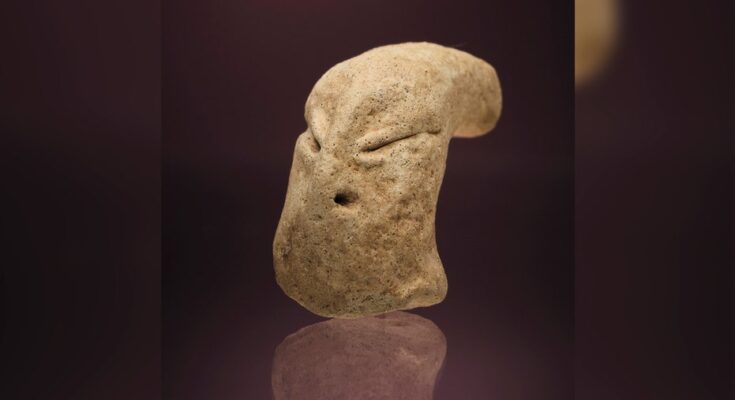A strange alien-like clay head dating back thousands of years has been retrieved from an excavation in Kuwait, stumping archaeologists about how it came to be.
In a Nov. 28 press release published by the University of Warsaw, the school explained that researchers from the Kuwaiti-Polish Archaeological Mission found the artifact in Bahra 1, an archaeological site in the Subiya region of Kuwait.
The press release called the artifact “one of the most remarkable” discoveries of the excavation, describing it as a “small, finely crafted clay head featuring an elongated skull, slanting eyes, and a flat nose.”
The figurine dates back to the Ubaid period of ancient Mesopotamia, which predated the Bronze Age. Archaeologists estimate that the artifact was crafted during the 6th millennium BCE, making it between 7,000 and 8,000 years old.
ARTIFACT WITH STRANGE INSCRIPTION DUG UP AT HOLY SITE IN JERUSALEM: ‘UNUSUAL LOCATION’
The University of Warsaw release noted that similar Ubaid figurines have been found before, but this artifact was the first of its kind uncovered in the Persian Gulf.
“Its presence raises intriguing questions about its purpose and the symbolic, or possibly ritualistic, value it held for the people of this ancient community,” Professor Piotr Bieliński said in the press release.
Archaeologists also noted that they uncovered two distinct types of pottery at the site, calling the discovery “pivotal” to the study of the Ubaid period.
ARCHAEOLOGISTS UNCOVER ONE OF THE WORLD’S OLDEST CHRISTIAN CHURCHES
“From their onset, excavations at the site have yielded two types of pottery: Ubaid are, known to have been imported from Mesopotamia, and a completely different type known as Coarse Red Ware (CRW) and known from sites in the Arabian Peninsula,” the press release explained.
“The latter type has long been described as produced locally, in the Gulf region, but actual places of its production have hitherto remained unknown,” the statement added. “Conclusive evidence finally came from the Bahra 1 site, including an unfired clay vessel.”
CLICK HERE TO SIGN UP FOR OUR LIFESTYLE NEWSLETTER
The findings confirm that Bahra 1, which is one of the oldest and largest-known settlements in the Arabian Peninsula, is also the oldest-known pottery production site in the Persian Gulf.
Excavators also found small fragments of plants that were added to the clay while the pottery was being made. Next, researchers will conduct an archaeobotanical analysis of the plant matter in order to learn about the local flora during the time period.
For more Lifestyle articles, visit foxnews.com/lifestyle.
“Early analyses have revealed traces of wild plants, particularly reed, within the locally produced pottery, while cultivated plant remains, including cereals, such as barley and wheat, have been found in the imported Ubaid ware,” Dr. Roman Hovsepyan said.
The Kuwaiti-Polish Archaeological Mission plans to continue studying the site, and hopes to find “further discoveries and insights into the intersection of the Arabian Neolithic and Mesopotamian Ubaid cultures as well as to develop further cooperation between Polish and Kuwaiti heritage specialists,” the statement noted.
“The ongoing excavations reveal Bahra 1 as a critical site for understanding the cultural exchanges between Arabian Neolithic societies and the Ubaid culture which spread from Mesopotamia to a vast territory, from Anatolia to the Arabian Peninsula,” the press release said. “Recent research at Bahra 1 contributed new information to the picture through several unique discoveries.”
